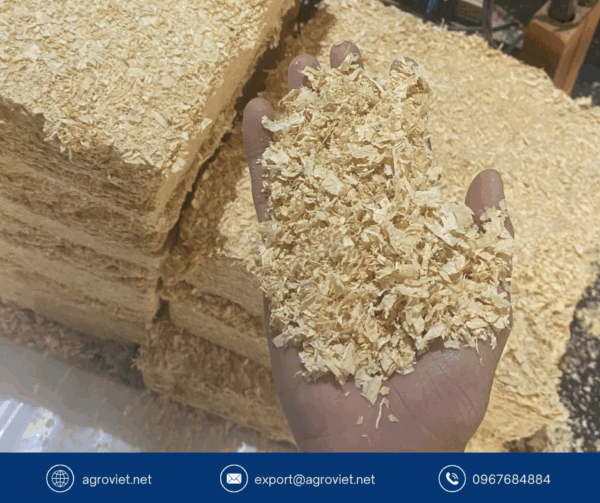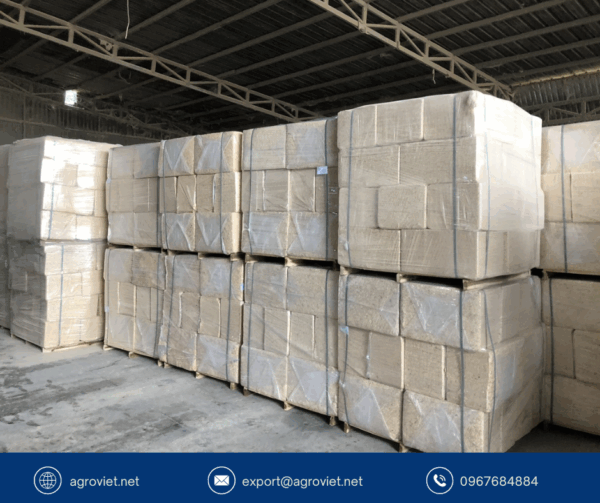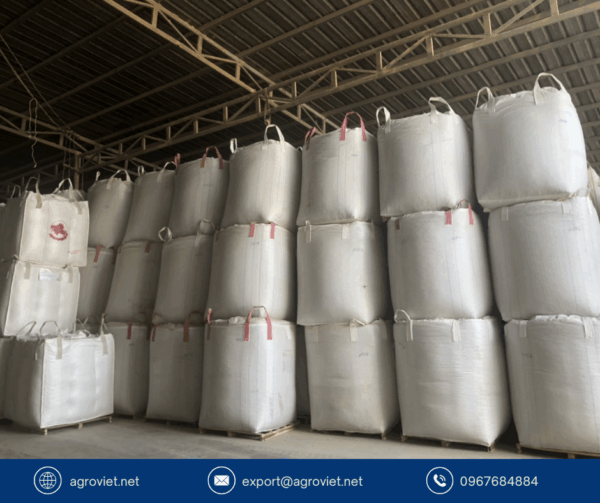Heat from Waste: How to Turn Used Wood Shavings into Briquettes for Winter Fuel
Winter heating for off-grid farms and homesteads demands sustainable, cost-effective solutions, especially when resources are limited. Used wood shavings, often discarded after serving as livestock bedding, are a valuable waste product that can be transformed into high-performance fuel. Combined with waste paper, these briquettes offer an eco-friendly way to heat barns, homes, or greenhouses, reducing landfill waste and fuel costs. This post explores the process of turning used wood shavings into briquettes, leveraging insights from the Instructables guide “Easy Way to Make Free Fuel From Sawdust and Paper,” supported by a realistic case study, and highlights the synergy of wood shavings and pellets in a circular economy.

The Opportunity in Used Wood Shavings
Used wood shavings from barn bedding are often considered waste, but they hold significant potential as a biomass fuel source. Soiled with manure and urine, these shavings are rich in organic material, making them ideal for compression into dense, high-energy briquettes. The Instructables guide outlines a simple method to combine sawdust or shavings with waste paper, creating briquettes that burn efficiently and produce substantial heat. This approach not only repurposes waste but also reduces winter heating costs, which can account for 10-15% of farm operational expenses, according to agricultural studies.
Why Traditional Disposal Falls Short
Discarding used bedding or relying on conventional fuels has drawbacks:
-
Landfill Waste: Sending soiled shavings to landfills contributes to environmental degradation and wastes a valuable resource.
-
Fireplace Feeding: Directly burning loose shavings, as noted in the Instructables guide, produces excessive smoke, stifles flames, and requires constant kindling, making it inefficient.
-
Propane or Electric Heating: These are costly ($500-1,500 per winter) and rely on non-renewable resources, challenging for off-grid setups.
-
Straw Briquettes: Straw-based briquettes burn quickly, produce more ash, and lack the heat output of wood-based fuels.
These methods fail to maximize resource use or sustainability, making wood shaving a superior alternative.

The Science of Wood Shaving Briquettes
Wood shavings, especially from softwoods like pine, are ideal for briquettes due to their physical and chemical properties:
-
High Energy Content: Shavings have a high calorific value (~4,500 kcal/kg when dry), comparable to wood logs, ensuring strong heat output.
-
Low Moisture Content: Kiln-dried shavings (8-12% moisture) and soaked paper, when compressed and dried, burn efficiently with minimal smoke.
-
Organic Additives: Manure in used shavings adds organic matter, increasing briquette density and burn time when properly compacted.
-
Compressibility: Shavings and paper pulp form dense briquettes under pressure, reducing air gaps and ensuring slow, steady combustion.
The Instructables guide emphasizes that compressing shavings and paper with body weight (using a plank on a briquette maker) expels more water, creating denser briquettes that burn longer and hotter than loose shavings.
Step-by-Step Guide to Making Briquettes
The process, adapted from the Instructables guide, is simple and requires minimal equipment, making it accessible for farmers and homesteaders.
Materials Needed
-
Used wood shavings (from barn bedding, pine or aspen preferred)
-
Waste paper (newspapers, junk mail, cardboard, shredded if possible)
-
Large tub or planter (50-100 gallons)
-
Plasterer’s mixing paddle and drill
-
Paper briquette maker (~$3-5 from second-hand stores or online)
-
Wooden plank (for compression)
-
Mesh bags or burlap sacks (optional, for drying)
-
Dry storage area (under a roof with air circulation)
Instructions
-
Collect Materials: Gather used wood shavings from barn bedding (avoid MDF or chipboard due to toxic fumes). Collect waste paper, including newspapers, junk mail, and cardboard, tearing into small pieces for easier blending.
-
Soak Paper: Fill a large tub 2/3 with water and add torn paper. Soak for 3-4 days until it breaks apart easily into pulp.
-
Mix Shavings and Paper: Attach a plasterer’s mixing paddle to a drill and blend the soaked paper into a mulch. Add used shavings (1:1 ratio with paper pulp) and mix thoroughly, adding water if too thick. Aim for a thick, moldable consistency.
-
Compress Briquettes: Fill the briquette maker with the shavings-paper mixture. Place a wooden plank across the handles and step on it to apply body weight, expelling water and compacting the mix. This method, per the Instructables guide, produces denser briquettes than hand compression.
-
Dry Briquettes: Remove briquettes from the maker and store in a dry, well-ventilated area (e.g., under a roofed outdoor space). Allow 1-2 weeks to dry fully, ensuring moisture content drops below 12% to avoid mold.
-
Burn Briquettes: Use dried briquettes in a wood stove, multi-fuel burner, or biomass boiler. They ignite easily and burn steadily, providing consistent heat.
Cost Estimate
-
Shavings: Free (from used bedding) or $2-4 per bale
-
Paper: Free (from junk mail or cardboard)
-
Briquette Maker: $3-5 (one-time purchase)
-
Tub and Paddle: $10-20 (reusable)
-
Total: ~$15-25 startup, with near-zero ongoing costs
This method is 80-90% cheaper than propane or electric heating for barns.
Benefits of Shaving-Based Briquettes
Briquettes made from used wood shavings offer:
-
Cost Savings: Free or low-cost materials reduce heating costs by 60-80% compared to propane.
-
Sustainability: Repurposing bedding and paper diverts waste from landfills, supporting a circular economy.
-
Efficiency: Dense briquettes burn longer and hotter than loose shavings, reducing refueling frequency.
-
Animal Health: Reducing loose shavings in barns lowers dust, improving respiratory health for livestock.
Pairing briquettes with wood pellets in stoves enhances burn consistency, as pellets provide steady heat while ignite quickly.

Case Study: The Maplewood Farm
Meet Laura and James Carter, who run Maplewood Farm, a 70-head mixed livestock operation (40 goats, 30 chickens) in rural Vermont, where winter temperatures drop to -20°F. In 2022, they discarded used straw bedding and relied on propane heaters for their barn, costing $1,200 annually. Loose shavings from their barn were tried in their wood stove but produced excessive smoke, requiring constant kindling and frustrating Laura. That winter, they lost 5 animals (7%) to respiratory issues and stress, exacerbated by dusty conditions.
In 2023, inspired by the Instructables guide, the Carters began making briquettes from used pine shavings and waste paper. They mixed soiled bedding with junk mail in a large planter, compressed it using a $4 briquette maker and a plank, and dried under a barn awning. The results were transformative:
-
Heating Costs Slashed: Briquettes replaced 80% of propane use, saving $960 annually.
-
Mortality Reduced: Only 1 animal (1.4%) was lost, a 5.6% improvement, due to reduced barn dust and stable heating.
-
Efficiency Improved: Briquettes burned 2-3 hours per load, reducing refueling time by 50% compared to loose shavings.
-
Waste Reduction: They diverted 500 pounds of shavings and paper from landfills, supporting sustainability.
-
Labor Savings: Making 50 briquettes took 1 hour weekly, and barn cleaning was easier with less loose bedding.
James shared, “Turning our used shavings into briquettes was a revelation. The barn stays warm, we’re saving money, and the stove burns clean. It’s a win for us and the environment.” The Carters now use Platts Bedding shavings for bedding and briquette production.
Practical Tips for Briquette Production
-
Safe Shavings: Use only pine or aspen shavings, avoiding MDF or treated wood to prevent toxic fumes.
-
Optimal Mix: Aim for a 1:1 shavings-to-paper ratio for balanced burn time and heat output.
-
Dry Thoroughly: Store briquettes in a ventilated area to prevent mold, checking dryness before burning.
-
Pellet Synergy: Mix wood pellets into briquettes (10-20%) for denser, longer-burning fuel.
-
Stove Compatibility: Ensure your stove or boiler is suited for briquettes to avoid clogs.
-
Safety First: Use gloves when mixing soiled shavings and ensure proper ventilation when burning.
Choosing Quality Shavings
Select kiln-dried shavings from safe softwoods like pine or aspen, with low dust and high absorbency (moisture content below 12%). Avoid chemically treated shavings to ensure safe burning. Premium shavings, like those from Platts Bedding, are ideal for both bedding and briquette production due to their consistent quality and low moisture.
A Sustainable Winter Fuel Solution
Turning used wood shavings into briquettes, as demonstrated at Maplewood Farm, transforms waste into a powerful winter fuel, reducing heating costs by 60-80% and mortality rates by 3-5%. This method, inspired by the Instructables guide, leverages shavings’ high energy content and compressibility for efficient, eco-friendly heat. By combining shavings with wood pellets, you can enhance burn performance and sustainability. Start making this winter to heat your farm while reducing waste and costs.
